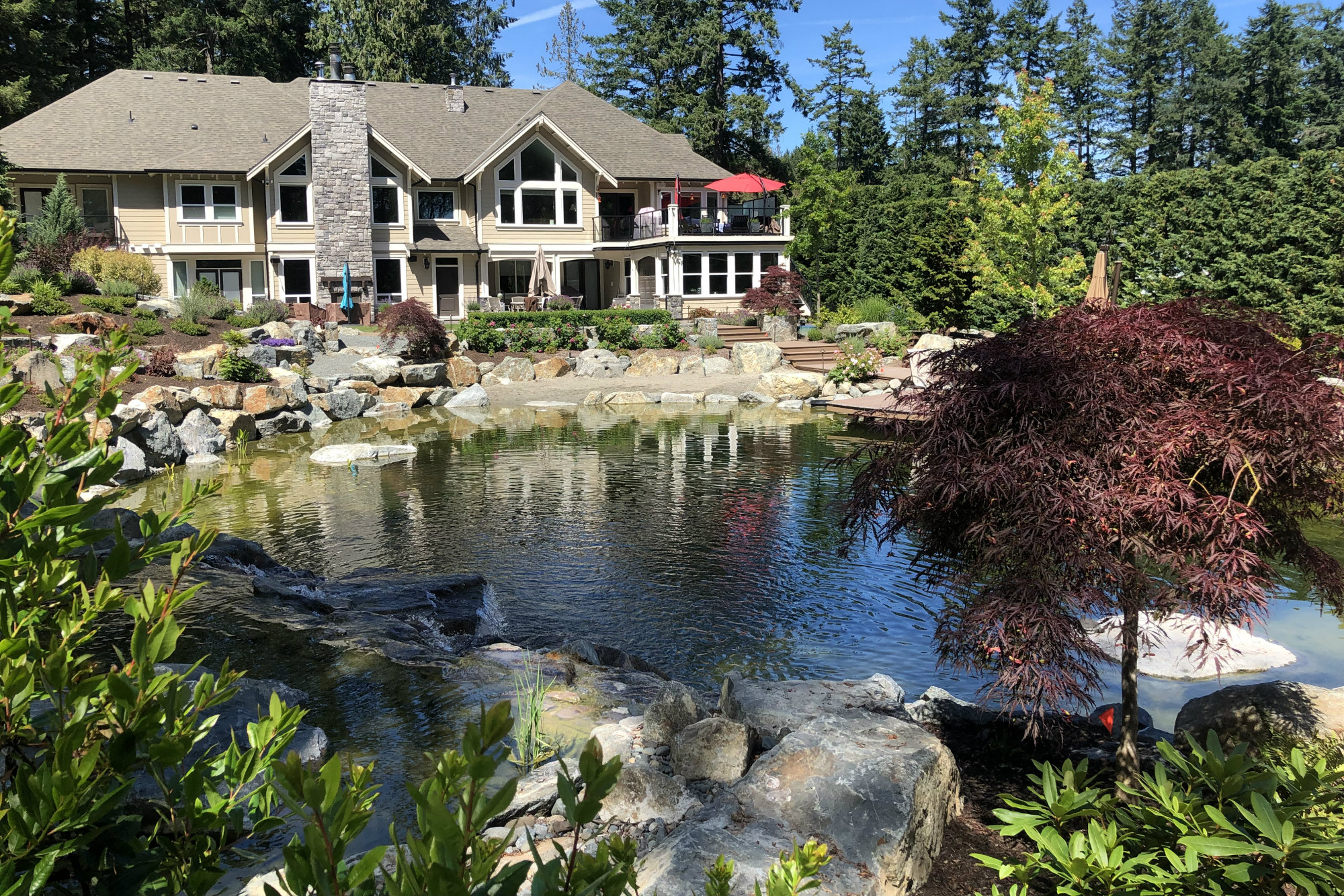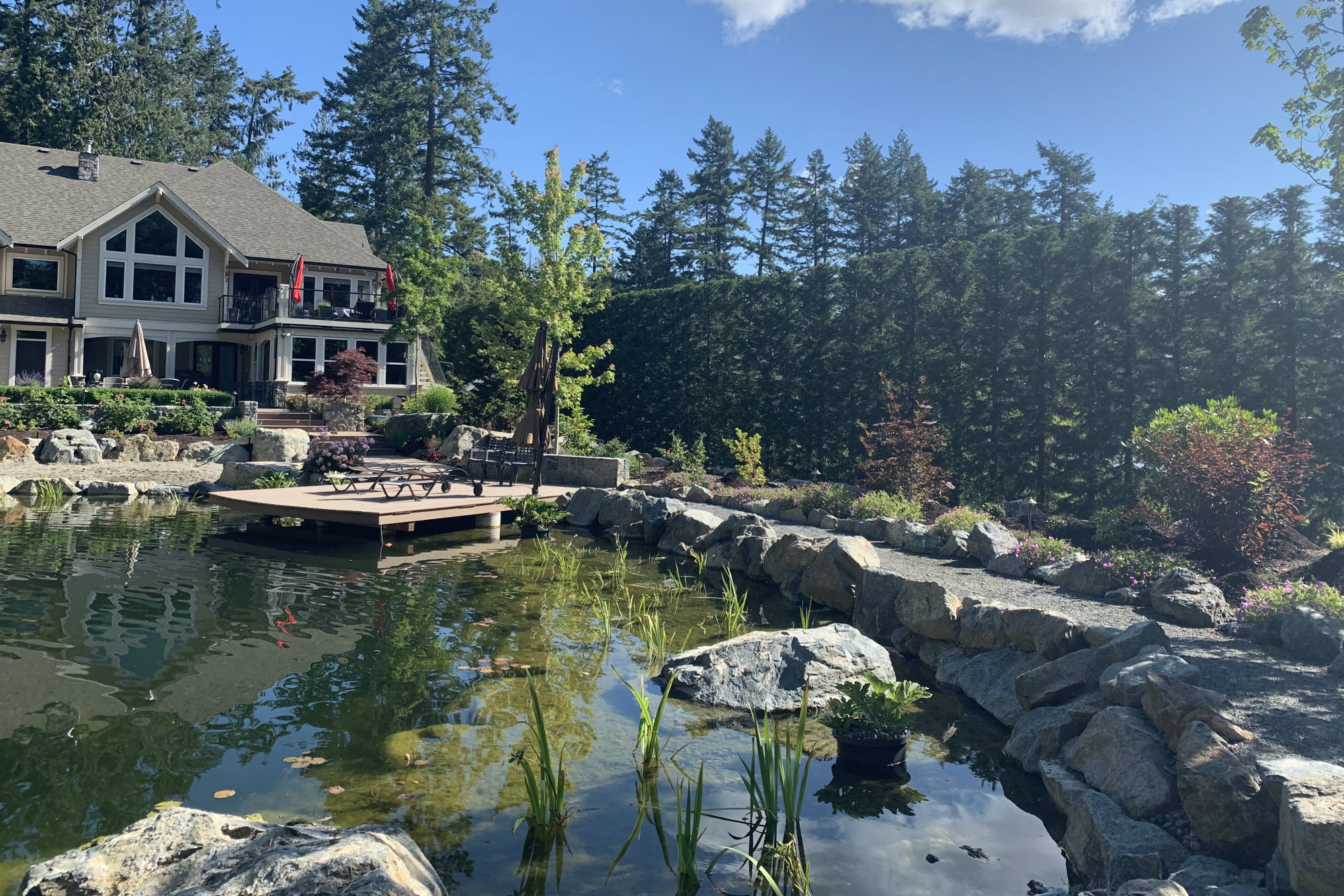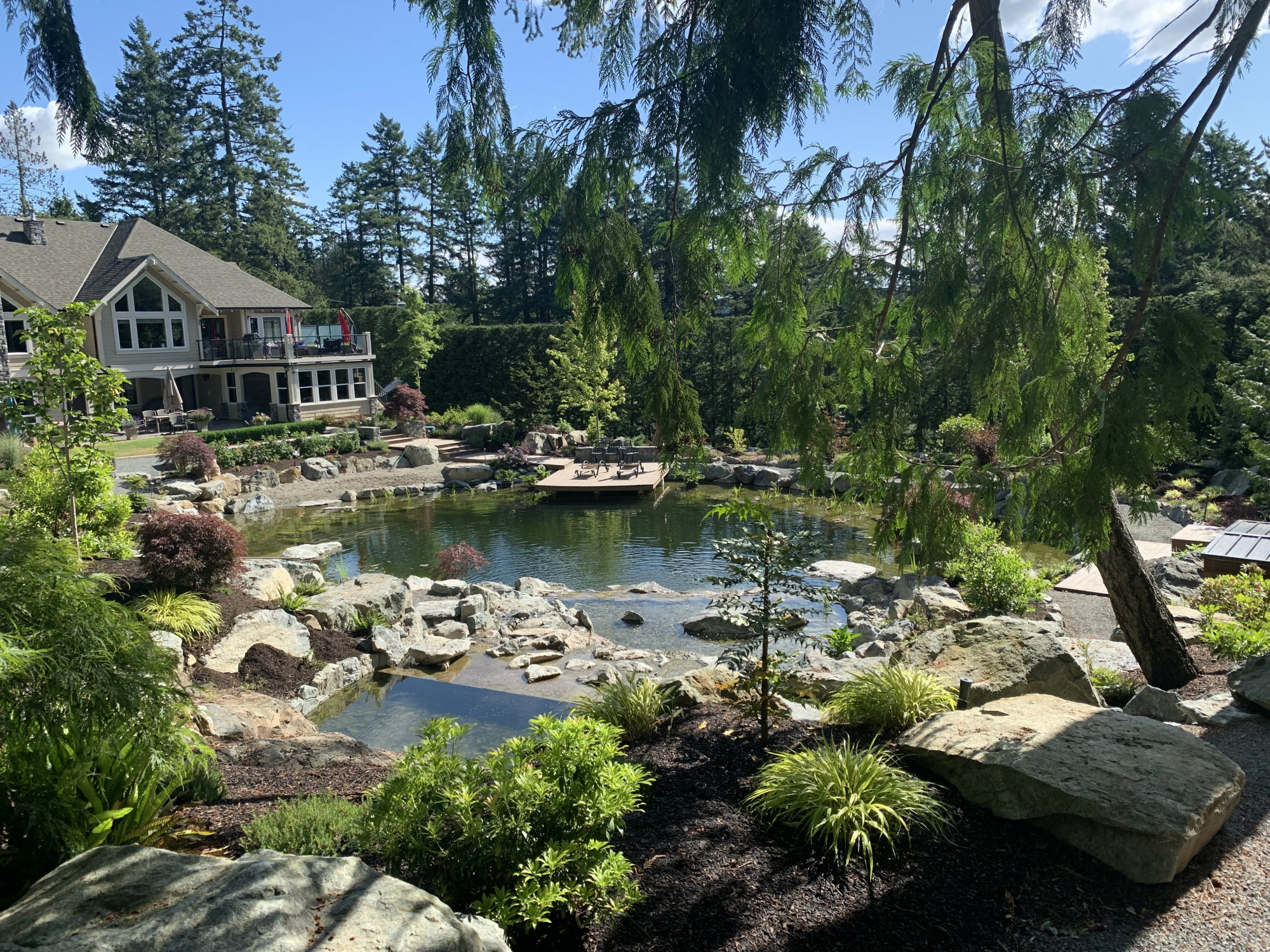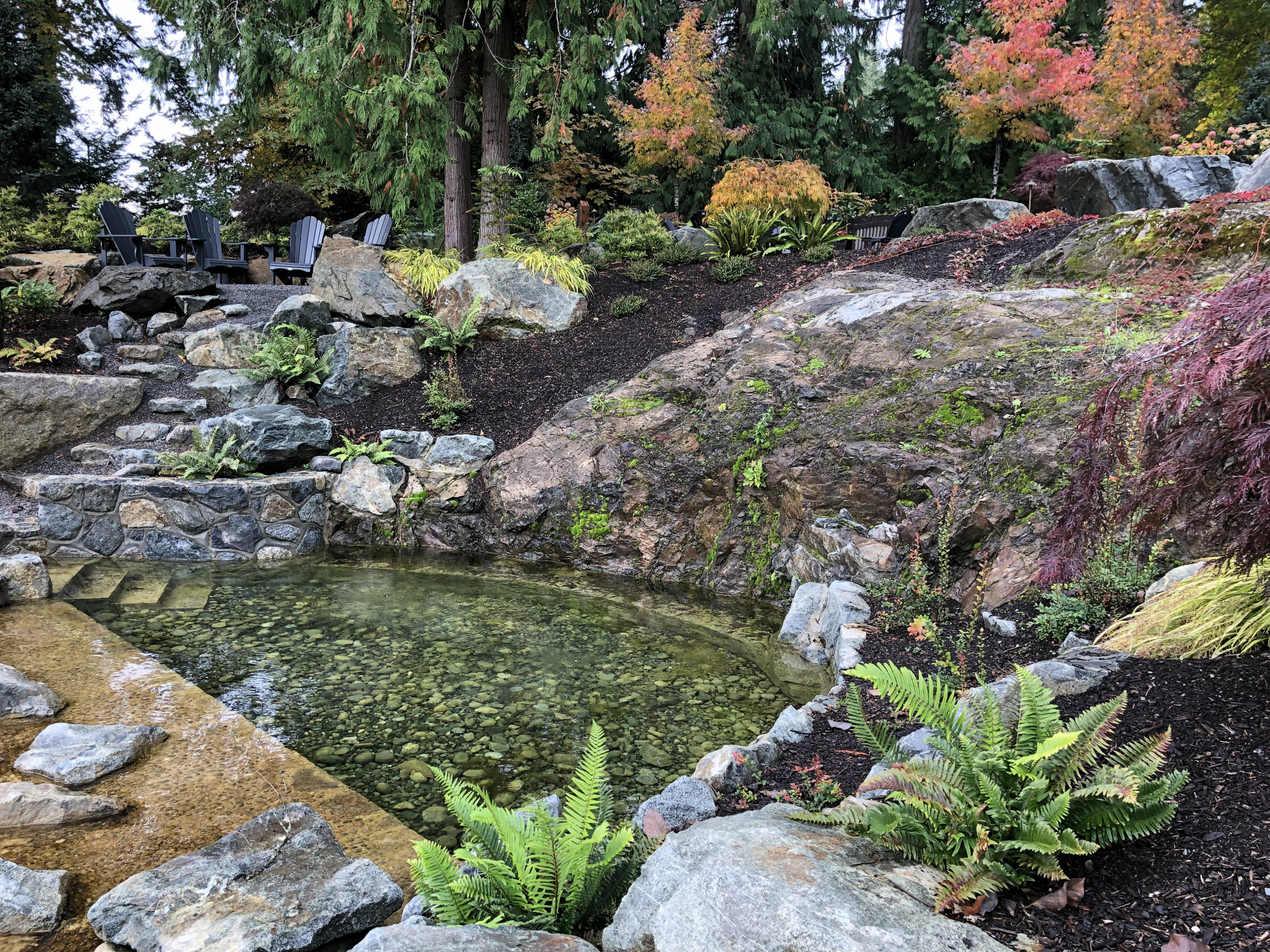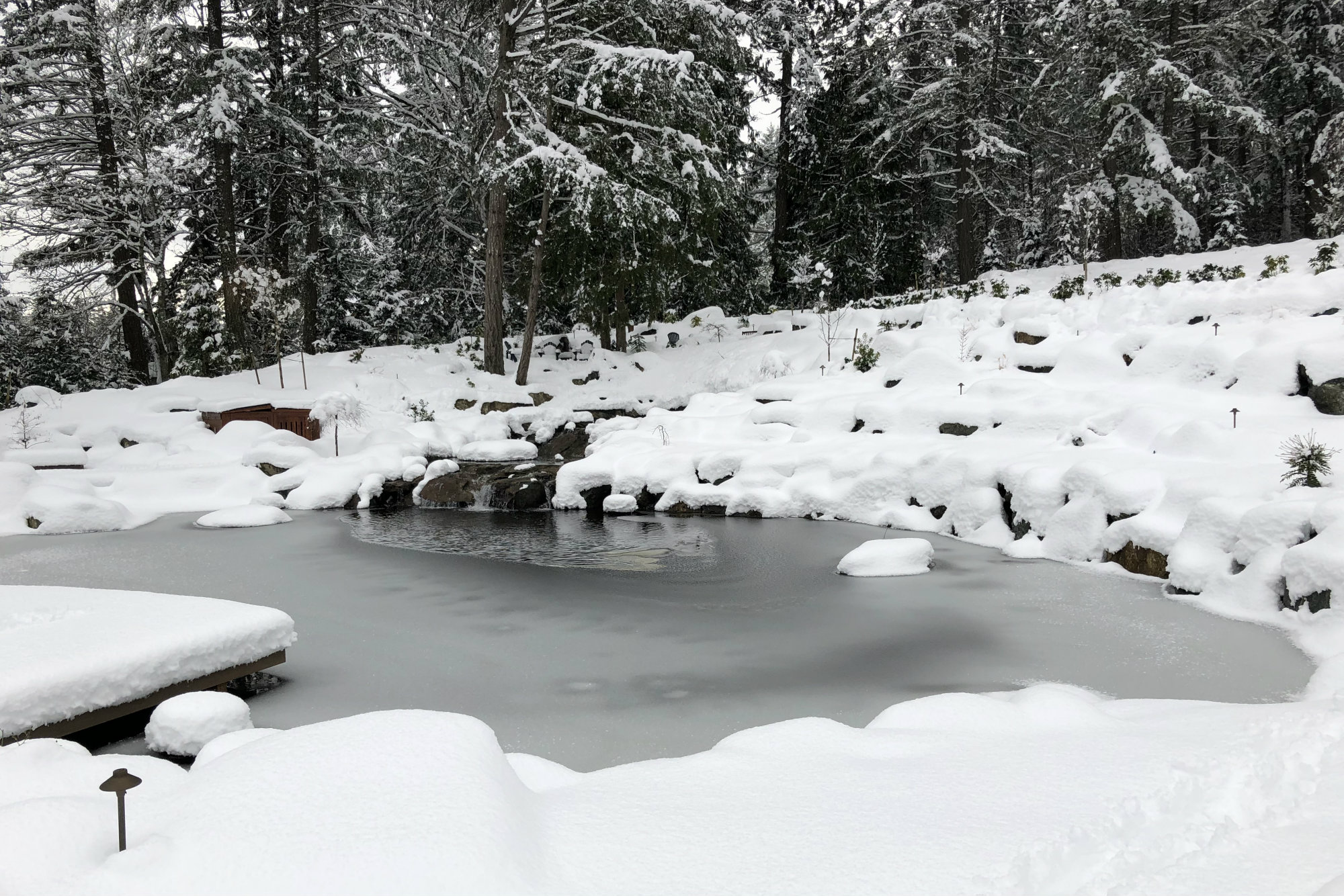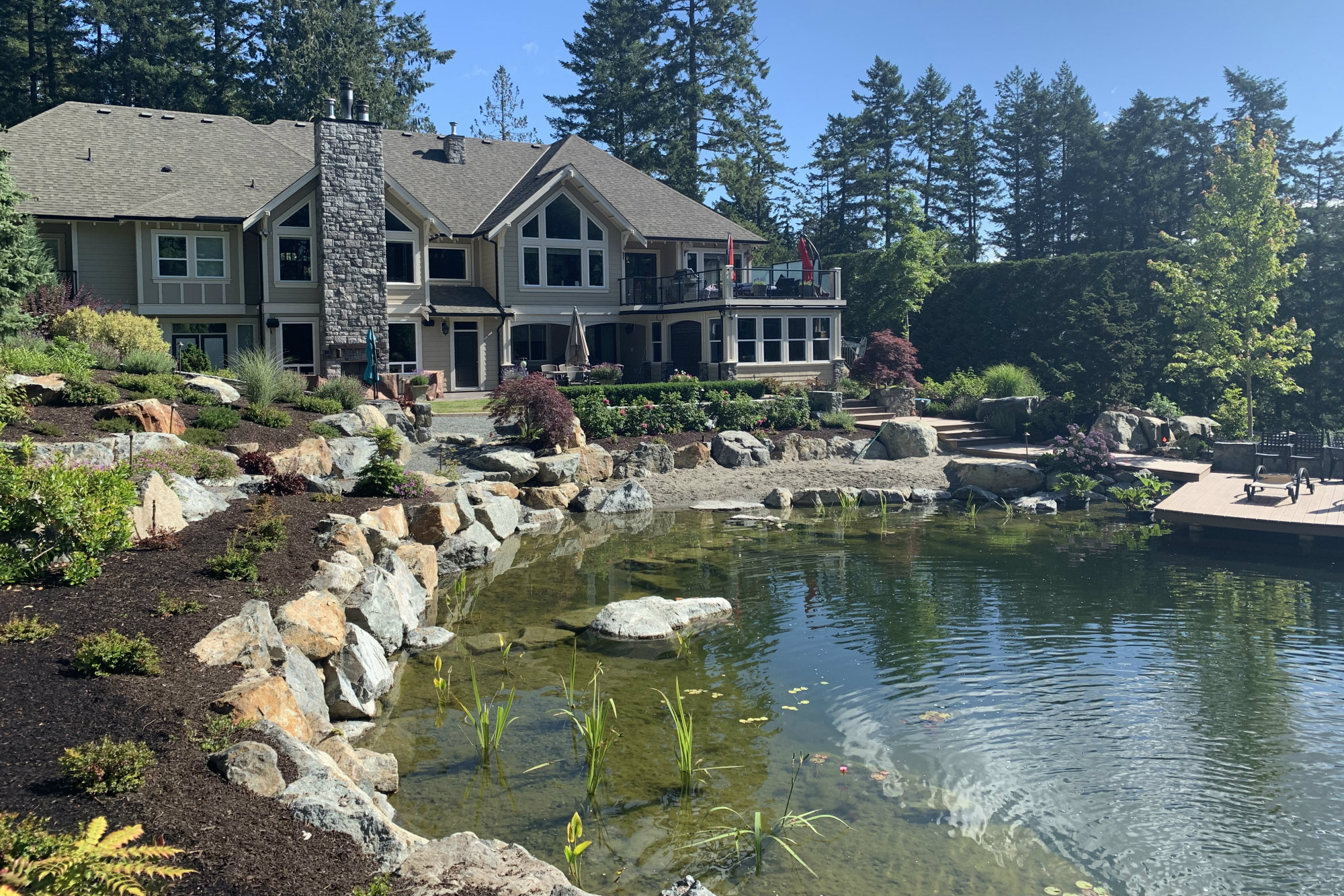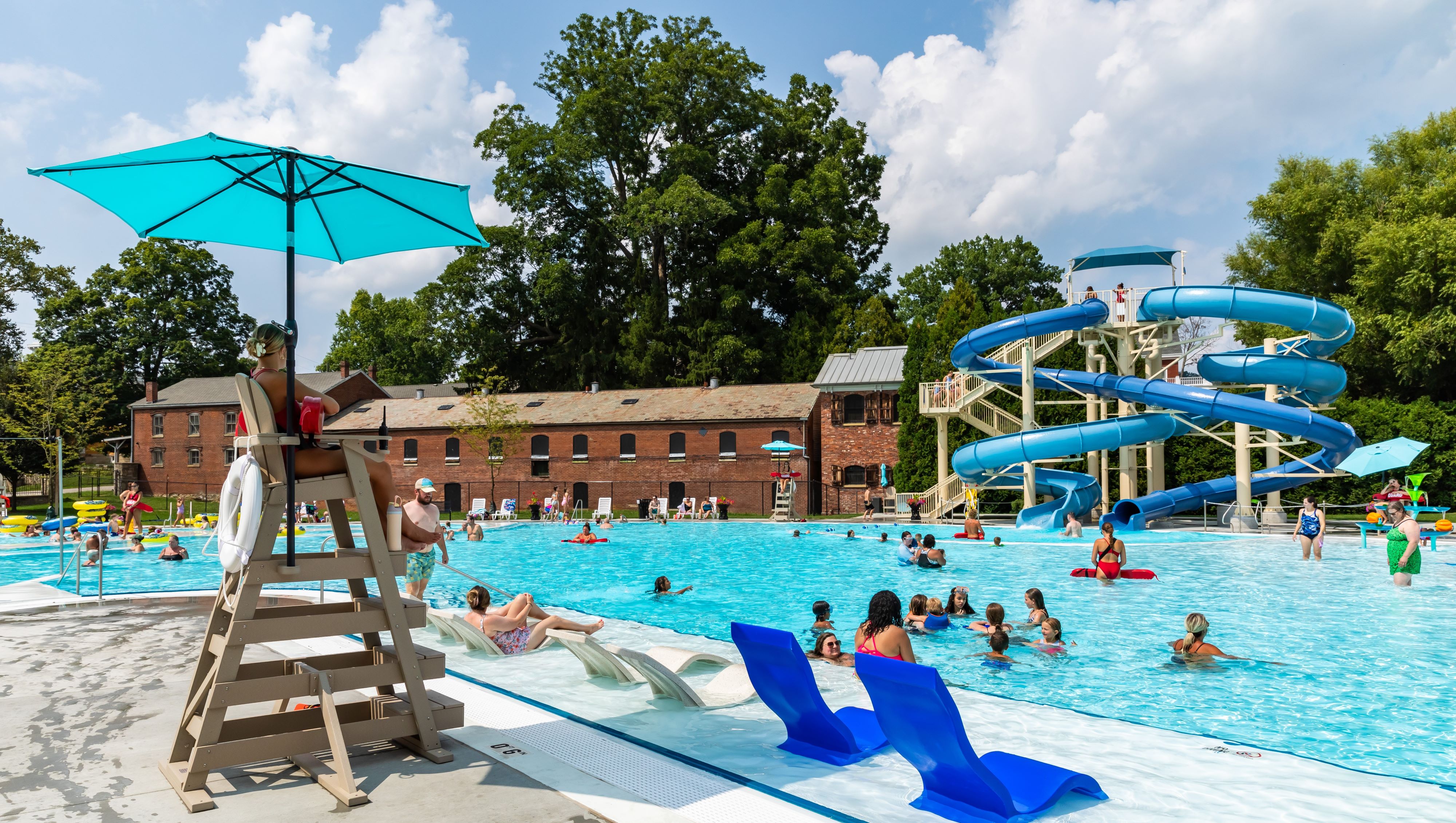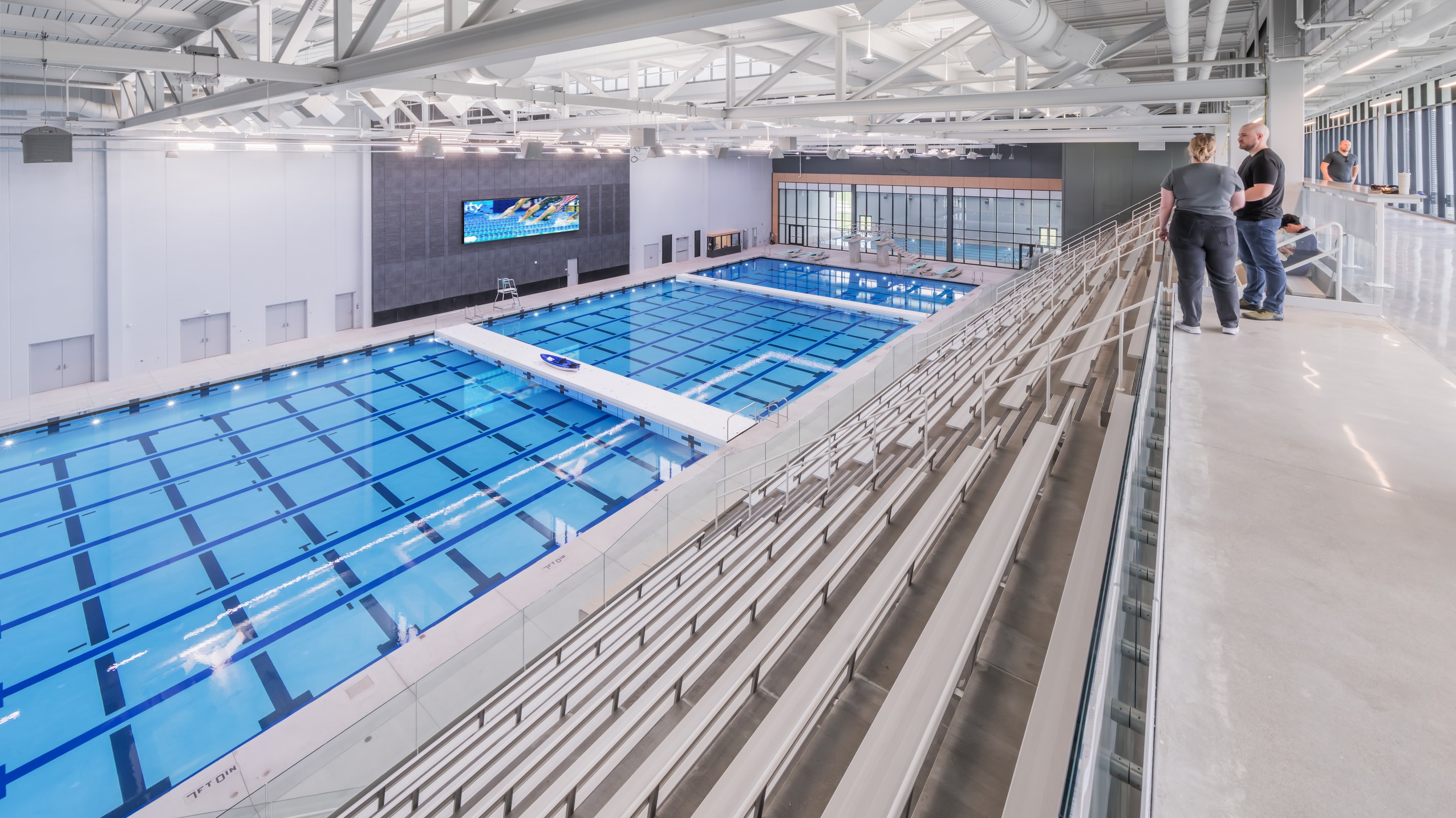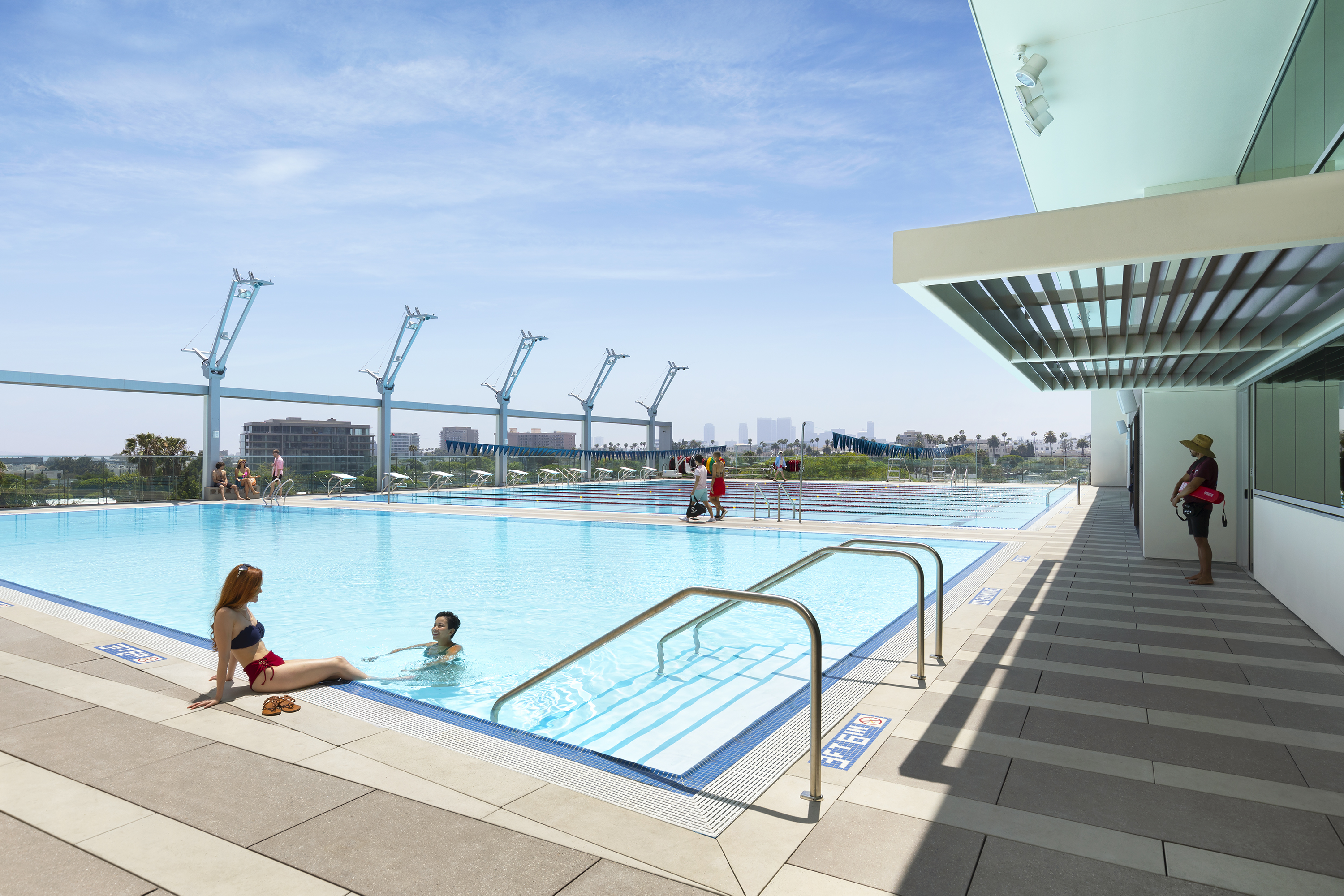Stephen McLeish, Landscape Architect/President
Konrad Babicz, Landscape Architect/Project Manager
Acacia Landscape, Victoria, British Columbia, Canada
Natural restoration
Acacia Landscape
The homeowners asked for a conventional pool to go on their forested lot. But the designers had a different vision.
Two-thirds of the 3-acre property was covered in trees, but there was a noticeable line of demarcation where some had been removed, making it look as if it had been clear-cut. Parts of the lot had also been roughed up by a dirt-biking child. As the homeowners explained, the lot’s 20-to-30-foot elevation change meant it often drained onto a neighbor’s yard during heavy storms.
Instead of a regular pool, designers Stephen McLeish and Konrad Babicz wanted to take advantage of the terrain’s assets while minimizing its liabilities.
“I said, ‘I just don’t see a conventional pool here. Have you ever considered a more natural pool?’” McLeish says.
What the Judges Thought
It’s difficult not to be drawn to this swimmable pond, which looks like something you’d happen upon during a hike.
The team crafted a rock-encircled, swimmable pond with a dock, diving rock, waterfalls and trails for hiking the land. On one side, a sizable natural vein of rock was preserved and used as the backdrop for a cold pool with bench. It and the substantial waterfeature in front of it were placed directly across from the dock.
The team chose and placed each rock specimen around the pond, which is cleansed with plant materials that remove phosphates and nitrates. Pond filtration is formed with plumbing that pushes water up through different layers of gravel. While the main pond is 15 feet deep, a shallower regeneration zone borders it, varying from 18 to 24 inches deep.
McLeish and Babicz also included various way to capture, remove or store plenty of storm runoff. In addition to the pond itself, this included a berm, several interceptor drains, and substantial lawn area and terraced planting beds to absorb water that, before, would have run off the dry soil.
